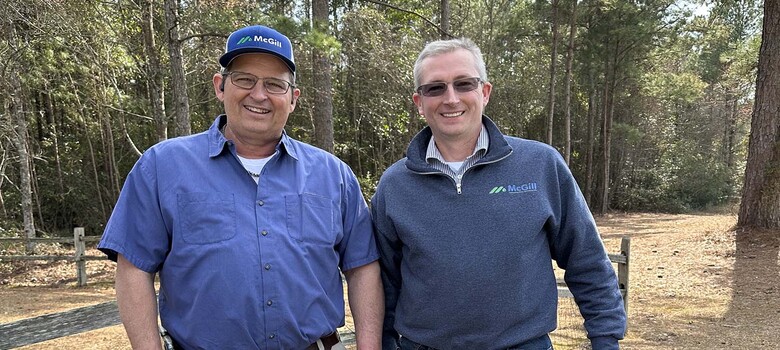 From the DukeHealth.org archives. Content may be out of date.
From the DukeHealth.org archives. Content may be out of date.
Minimally Invasive Biliary Procedure Offers Relief From Past Surgery

When Jerry Adair sought care at Duke for an existing condition, he didn't know he was going to get a much better solution. The minimally invasive procedure he underwent at Duke freed him from the constraints of painful and infection prone external drains that had been inserted years ago by doctors at another hospital.
Jerry Adair's only goal when he moved from Pennsylvania to Raleigh in 2011 was to be closer to his daughter and granddaughter. He never suspected the move would also be good for his health.
Adair, now 65, was diagnosed with a precancerous pancreatic mass in 2005 and underwent a Whipple procedure to remove a portion of his pancreas, stomach, and intestines. Four years later, he needed another procedure to repair a surgical complication called bile duct stricture. Scar tissue had narrowed his bile duct, and blocked the release of bile. Surgeons at a Pennsylvania hospital inserted external tubes to drain the bile into a collection bag outside his body.
When Adair needed a routine check of the drain after moving to Raleigh, he made an appointment with Duke digestive disorders specialist Jorge Obando, MD. He quickly learned there was a better option.
“The external drains can be painful, says Obando. “They can get infected, and they negatively impact quality of life. I consulted with the [gastroenterology] team and we thought we could use a minimally invasive technique to repair the biliary stricture and remove the drains.”
Adair was impressed with Obando’s recommendation. “His main concern was to provide me with something different, to do something about my problem, not just talk about it.”
Obando performed a complex version of ERCP (endoscopic retrograde cholangiopancreatography), during which he inserted stents into the biliary duct to keep it open. Adair went home two hours after the minimally invasive procedure. The surgery was a success. “The drains were removed, and the stricture remains open,” Obando says.
Today, Adair is no longer burdened by the worry and maintenance of the external drain required. “ “I had to drain it multiple times each day and it was very time-consuming in other aspects.” The new procedure provided psychological relief as well. “I was reluctant to go out because there was the constant feeling that it may be leaking. Now I’m no longer concerned. The stents offered extreme relief. It has freed me.”



